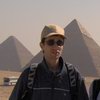I am presently into the second week of my lessons of Subnuclear Physics for the 2nd year of specialization in Physics, and I have just finished a lesson discussing the current searches for the Higgs boson at the Tevatron collider. Since the course has a focus on experimental techniques, I found it useful today to give as an exercise the determination of an order-of-magnitude estimate of cross section limits that the CDF experiments can set on a 160 GeV Higgs boson, with the data so far analyzed. It is an exercise I worked out by heart during my walk to the Physics Department: this should tell you it is not of overpowering difficulty.
These days the Higgs boson search is a bit over-hyped, with the impending competition between Tevatron and LHC on the discovery of the fabled boson making headlines every time there is a new, even minor, update in the results of the CDF and D0 experiment. But the hunt is on for many other, maybe even more interesting, rare processes.
A Sunday morning browsing through preprints recently posted in the Cornell Arxiv revealed interesting reading material. If you have a couple of hours to kill next week, why not having a look at the following papers ? It will definitely hurt you less than spending the time on your WII or watching Jerry Springer.
My statistics page depressingly shows that a large fraction of readers who visit this site do so for an average of 30 seconds. Maybe they were looking for something different, or maybe they do not like the content offered here. In any case, I have decided that my long, detailed articles about particle physics are not exactly meeting the demand of the audience. I am not going to change my writing style because of that, of course, but I will try to also offer some thirty-seconds physics bits here, every once in a while. So let me make a dry run, using a recent result by the CDF collaboration. The clock may start.
"A black cat crossing your path signifies that the animal is going somewhere".
Groucho Marx
 Living At The Polar Circle
Living At The Polar Circle Conferences Good And Bad, In A Profit-Driven Society
Conferences Good And Bad, In A Profit-Driven Society USERN: 10 Years Of Non-Profit Action Supporting Science Education And Research
USERN: 10 Years Of Non-Profit Action Supporting Science Education And Research Baby Steps In The Reinforcement Learning World
Baby Steps In The Reinforcement Learning World







 I have known Marco Cardin for a couple of years because besides being an accomplished amateur astro-imager he is also an avid visual observer. His encyclopedic knowledge of the night sky wonders is a great help on the field during the monthly night-long observations in dark, moonless nights we spend on the eastern Alps, trying to squeeze the most out of the 16" Dobson telescopes we carry with us. These instruments have no fancy "go-to" features, but with Marco's help and organization we can frame close to 100 rarely seen objects per night.
I have known Marco Cardin for a couple of years because besides being an accomplished amateur astro-imager he is also an avid visual observer. His encyclopedic knowledge of the night sky wonders is a great help on the field during the monthly night-long observations in dark, moonless nights we spend on the eastern Alps, trying to squeeze the most out of the 16" Dobson telescopes we carry with us. These instruments have no fancy "go-to" features, but with Marco's help and organization we can frame close to 100 rarely seen objects per night. 
